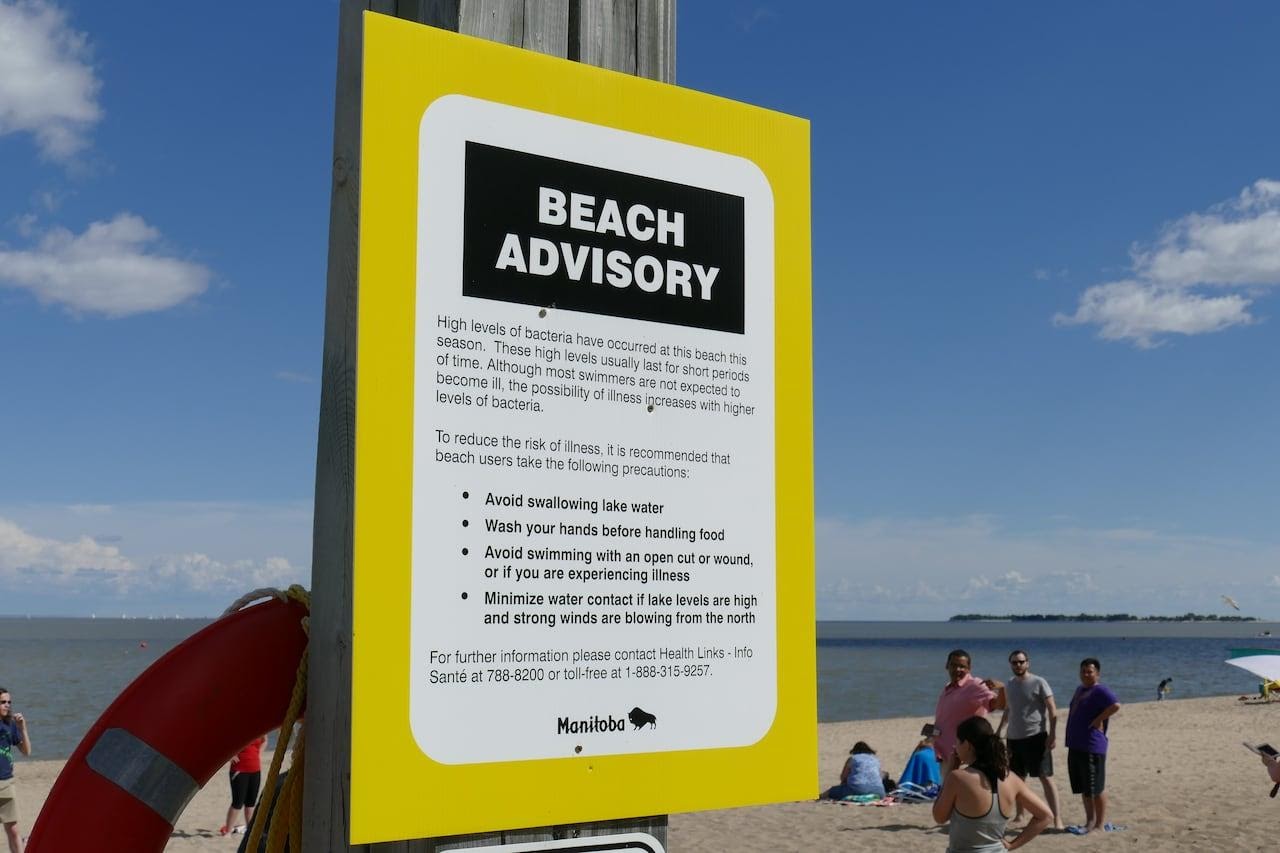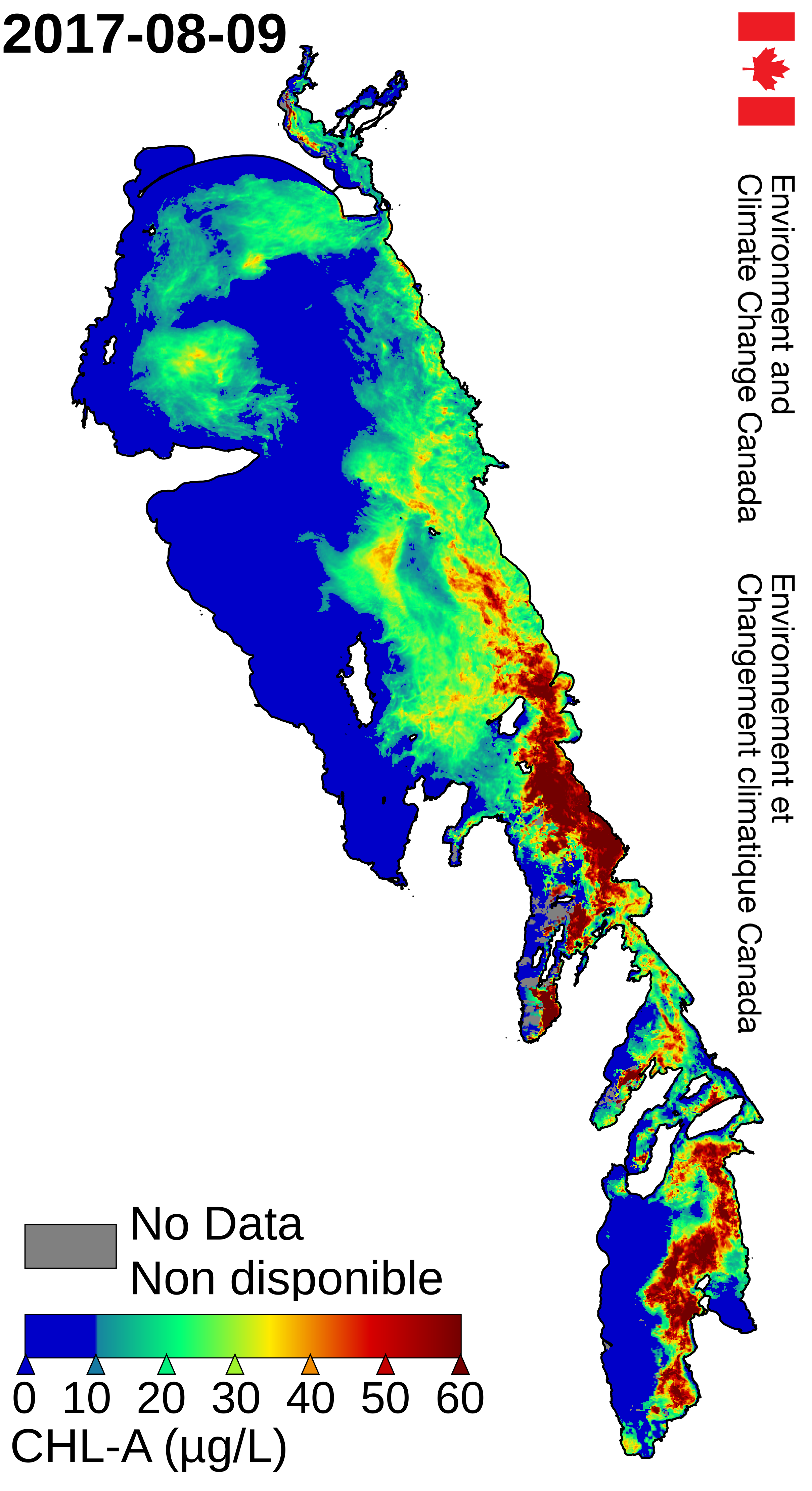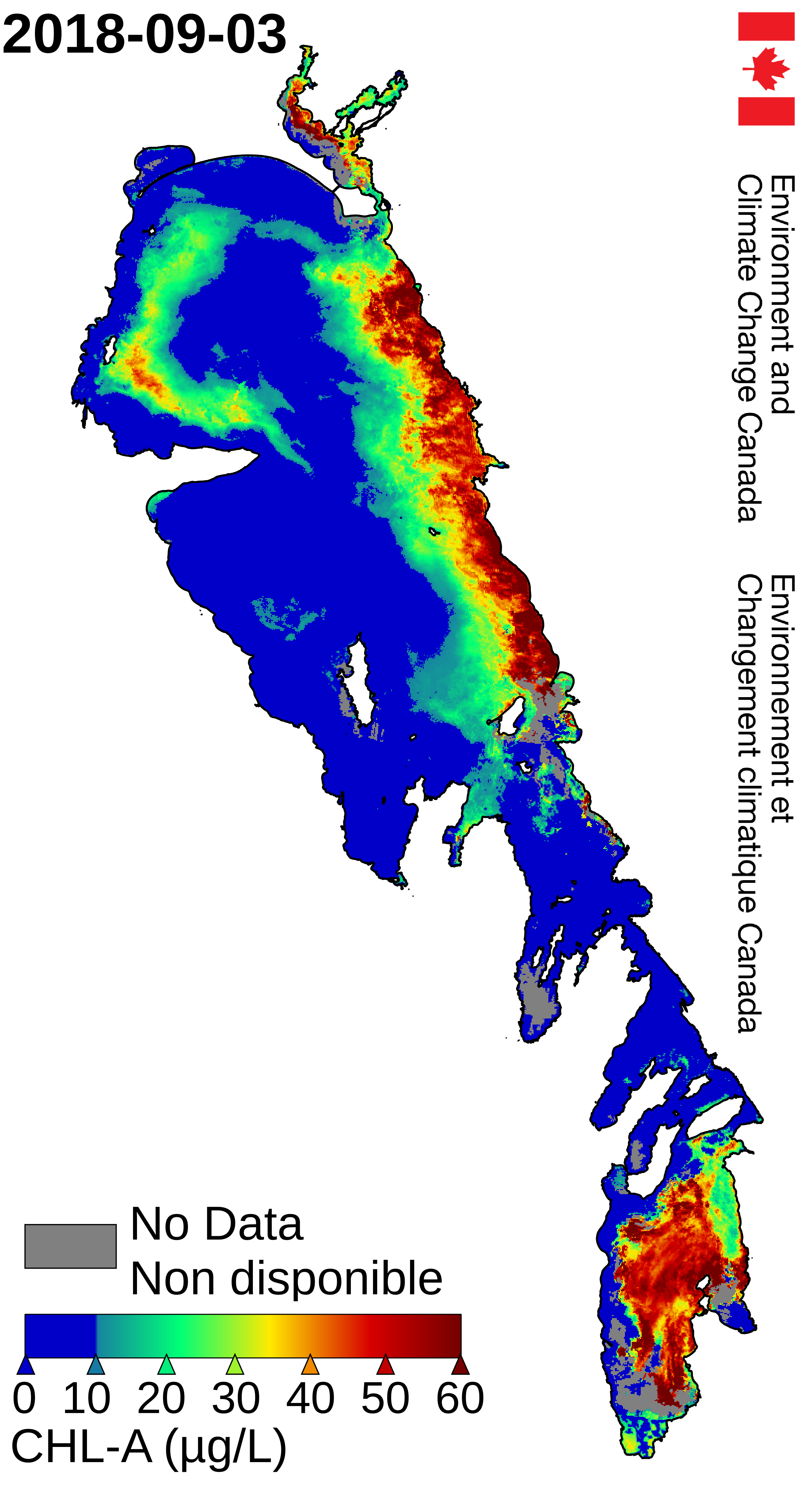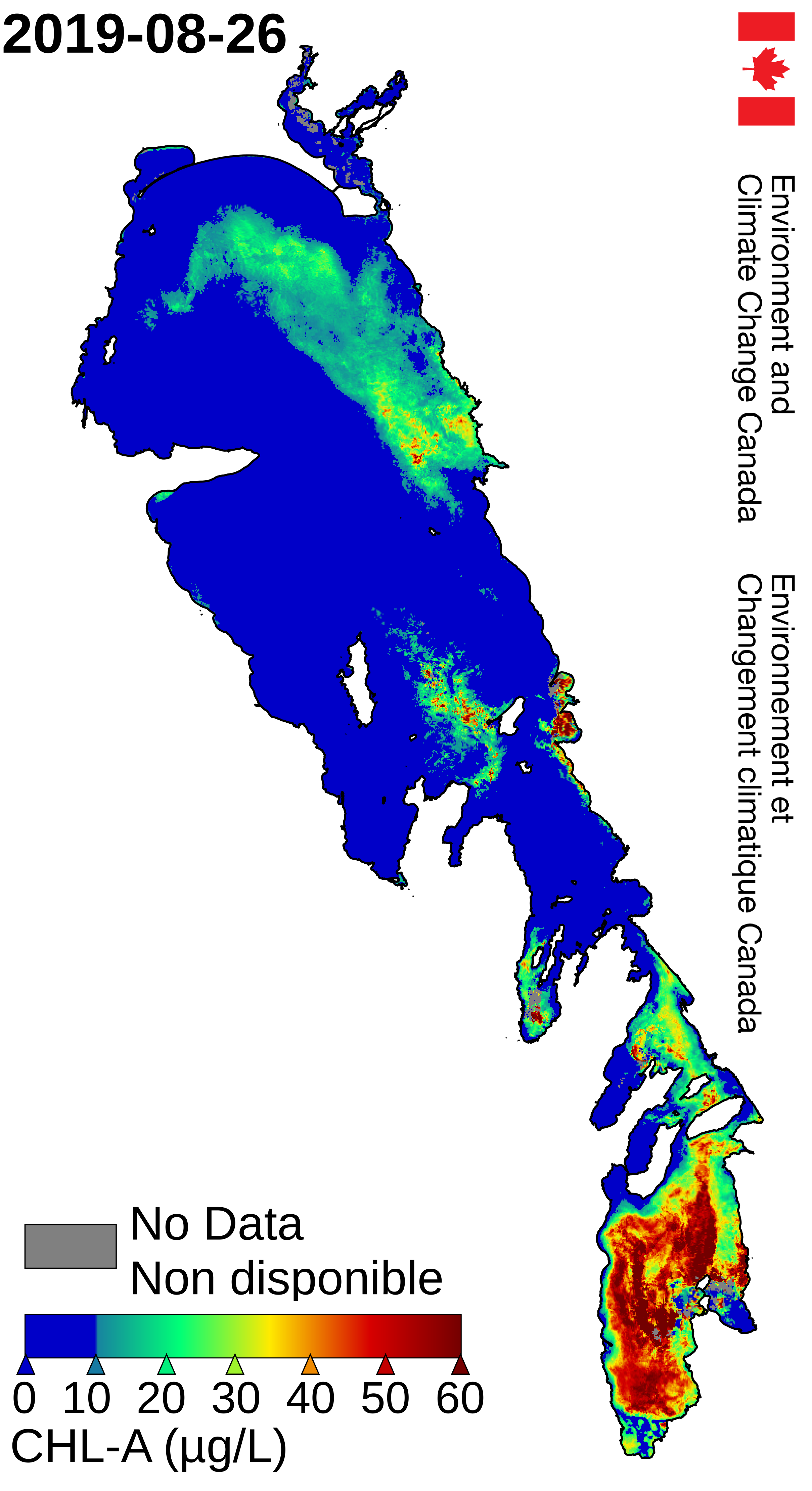
With summer temperatures starting to soar, many Canadians are eager to visit our favourite local beaches to break the heat. In many parts of the country, this means a trip to the nearest lake or river.
Climate change is impacting waterbodies across the country, with lakes in Canada warming two times faster than other lakes in the world.[1] And with these changes come increased health risks. Higher temperatures and changing precipitation patterns make lakes more suitable for waterborne disease outbreaks.[2] As water quality worsens under climate change, beach closures and swimming advisories are expected to become more common.[3]
When enjoying activities out on the water - such as boating, fishing, or swimming - people should be aware of potential risks that can come from using the water. The main risks of waterborne disease are associated with harmful algal blooms and high bacteria in the water.
Harmful algal blooms, climate change, and health
Harmful algal blooms can occur when algae in the water grows out of control. These blooms of algae, such as blue-green algae (also known as cyanobacteria), are concerns for ecosystems as well as people.[4]
Climate change projections are clear. Across the country, summers will last longer and the number of hot days will increase.[5] In many parts of Canada, longer, hotter summers may be warmly welcomed. However, warmer air temperatures and longer summer seasons mean warmer lakes and more algal growth.[6] Warmer, longer summers, coupled with changes to rain events that sweep nutrients into lakes, create a favourable environment for algal blooms to flourish.
Algae in the water is a natural, important part of lake ecosystems. The growth of algae depends on temperature, light, and nutrients (such as those found in agricultural fertilizers and sewage runoff). Excess nutrients from human sources in waterbodies is called eutrophication. Eutrophication is a worldwide issue that can result in a variety of local problems, including widespread fish kills and bad smells coming from the lake.[7]
Harmful algal blooms can release dangerous toxins, which are a risk to human health. Some toxins produced by cyanobacteria can create severe symptoms that can affect the nervous system, respiratory system, or liver. Contact with the body can cause skin rashes and irritation of the ears and eyes, and blistering of the lips.[8] Algal toxins can also pose a potential health threat to pets. Dogs that swim in affected water can experience algae poisoning from exposure to these toxins which can quickly become fatal.[9]
While algae is a serious concern for physical health, it is important to also consider the mental health impacts of algal blooms when they interfere with livelihoods. The impacts that algal blooms have on the traditional livelihoods of some Indigenous communities has had serious effects on the mental, physical and spiritual well-being of these communities.[10]
Read More: Algae impacts in Misipawistik Cree Nation
Dr. Becky Cook, community member and researcher from Misipawistik Cree Nation (MCN), says that from an Indigenous perspective health has to be thought of holistically. The physical health risks in recreational use are not the only negative impact of these blooms. They also impact MCN citizens' ability to practice their inherent Indigenous rights to use the water for nourishment, which results in negative outcomes for the mental, spiritual and physical health of the people.
Cook explains that the fishermen are greatly affected by these blooms as the algae coats their nets and reduces the amount of fish they catch, creating a barrier to providing for themselves and their communities. They also have concerns about the ongoing degradation of the whole lake ecosystem and its potential effects on the fish populations.
Cook grew up in Misipawistik on Lake Winnipeg, and says that algae was never a problem in her region when she was young, but has increasingly become a challenge for her community. There is a growing disconnect in the younger generations, Cook explains, as ecosystems are degraded within their territory and people are less able to use the land as they once did.
Extreme events and water quality
When a large rain storm sweeps across the landscape, the heavy runoff that drains into lakes can carry pollutants such as bacteria and excess nutrients. Ian Young, an assistant professor at the School of Occupational and Public Health at Ryerson University, explains that wastewater treatment plants can be overwhelmed by heavy rainfall events, which can cause untreated water to bypass straight into a waterbody. The influx of bacteria contaminates water and can cause human health concerns.
Young also warns that sandy shores serve as a suitable environment for bacteria to survive and grow. Winds increase wave action which can disturb the sand and result in a spike in bacteria in the water, above the safe limit for swimming or drinking.

Beach advisory notice at a Manitoba beach due to high levels of bacteria.[11]
Climate change is resulting in more frequent and intense rainstorms across much of Canada.[12] “As we see more of those extreme events in the future,” Young explains, “we would expect more spikes in poor beach water quality.” And more water quality issues mean more frequent beach closures.[13]
While we can expect to see an increase in current waterborne diseases with climate change, we may also see an introduction of new bacteria and microbes not commonly seen in Canada. Young explains, “as the temperature gets warmer due to climate change, environmental conditions that were previously unsuitable for certain bacteria might become more suitable.”
How do waterborne diseases make you sick?
The main ways someone can become ill from waterborne diseases are by direct contact on the skin or accidentally swallowing water with bacteria or toxins in it.
“Children are more susceptible to these illnesses,” says Young. “They tend to spend more time in the water than adults... and they are more likely to swallow water accidentally.” Young explains that children are also more at risk because they are exposed when playing in the sand which can be present with bacteria.
Common symptoms of waterborne illness following ingesting or coming in contact with the contaminated water can include: diarrhea, vomiting, abdominal cramps, eye infection, ear infection, and skin rashes.
Symptoms of waterborne illnesses are similar to those of foodborne illnesses, Young explains, so people often don’t realize they are sick from the water. Since waterborne illness often goes undiagnosed and unreported, the rate of waterborne illnesses in Canada is not known.[14]
Preventing waterborne illness
One thing you can do to lower your risk of waterborne illness is to pay attention to government guidelines for swimming advisories and beach closures, which are put in place to protect the public from entering the water when these risks are present. However, it is important to keep in mind that water conditions can change very quickly and advisories and closures may not always be in effect when water is contaminated. [15] To reduce risk of waterborne illness there are other steps that can be taken, including:
- rinsing your body with clean water immediately after swimming
- avoid swallowing water
- avoid swimming after a rain event
- avoid swimming where algae is visible
- monitor children and pets around algal blooms
To find information, visit your provincial beach monitoring web pages for the most recent water quality updates before you head to the beach.
Read More: Modelling water quality to protect our health
Researchers are continually creating and updating predictive models that can anticipate when there will be a possible risk of contaminants in the water. They can predict water quality based on previous day weather conditions.[16] These models are used to support public health officials in making risk management decisions.
These models are informed by water quality monitoring data. For example, the EOLakewatch interactive algal bloom monitoring by Environment and Climate Change Canada uses remote sensing technology to capture lake-wide conditions. To read more about the EOLakeWatch and to use the interactive monitoring tool, click here




Increasing Bloom Extent in Lake Winnipeg's South Basin from 2016-2019 from EOLakewatch
Protecting our waters
The key to keeping ourselves and our beaches healthy is to prevent the water from becoming contaminated in the first place. One thing that can be done is better controlling runoff of nutrients and bacteria from wastewater treatment and agricultural fields. Education for the public on potential water quality risks, as well as improved recreational water management programs (such as monitoring and guidelines) will collectively reduce the risk of illness among beach visitors.[15]
“It is a really important time right now,” says Cook, “We have to do the work to try and educate ourselves on these threats to our natural resources and trying to protect them.” Cook further explains that by bringing together knowledge from the Indigenous communities and scientists we can better understand climate change and collaborate to find ways to avoid its worst impacts.
Another way to help improve the health of your local recreational water is to become a citizen scientist and volunteer to collect water samples.
Read More: Help your lake by becoming a citizen scientist!
There are many organizations looking for community members to help collect local water quality data. This data is used to better understand watersheds and determine beach quality.
Chelsea Lobson runs the Lake Winnipeg Community-based Monitoring Network, where volunteers all across the Lake Winnipeg watershed collect water samples. “A lot of people feel really strong connections to the waterbodies near them and they want to make a difference,” says Lobson, “having a hands-on way to go out frequently and connect and improve the health of that water is very fulfilling”.
Interested in helping a waterbody near you? Find out more about becoming a citizen scientist at:
Climate change and disease mitigation
Climate change is not only impacting waterborne diseases but also other infectious diseases (such as tick-borne and foodborne diseases). While there are steps we can take to minimize our immediate risks, the best solution to the long-term impacts on our health is to reduce climate change.
Lowering our greenhouse gas emissions can curb the intensifying heat and precipitation that is expected in coming years, and lessen the associated health risks. Efforts are needed from governments, policy makers, industry, and community members to be part of the solutions to these issues.
You can read more about the connections between climate change and health, and the co-benefits of solutions, in our Climate Change and Health and Take Action articles.
References
- CTV News - Toxic algae, climate change, bad policy: Scientists say fresh water under threat. https://www.ctvnews.ca/sci-tech/toxic-algae-climate-change-bad-policy-scientists-say-fresh-water-under-threat-1.4692925
- Wu et al., (2016) Impact of climate change on human infectious diseases: Empirical evidence and human adaptation. https://www.sciencedirect.com/science/article/pii/S0160412015300489
- Knowlton et al., (2014) Human Health. Climate Change Impacts in the United States: The Third National Climate Assessment. https://nca2014.globalchange.gov/report/sectors/human-health#intro-section
- Environmental Protection Agency. https://www.epa.gov/cyanohabs
- Climate Atlas of Canada. https://climateatlas.ca/map/canada/plus30_2030_85#
- Hayes et al., (2020) Effects of lake warming on the seasonal risk of toxic cyanobacteria exposure. https://aslopubs.onlinelibrary.wiley.com/doi/10.1002/lol2.10164
- United States Geological Survey. https://www.usgs.gov/mission-areas/water-resources/science/nutrients-and-eutrophication?qt-science_center_objects=0#qt-science_center_objects
- HealthLinkBC. https://www.healthlinkbc.ca/healthlinkbc-files/cyanobacteria-blooms-blue-green-algae
- VCA Animal Hospitals. https://vcacanada.com/know-your-pet/algae-poisoning
- Willox et al., (2014) Examining Relationships Between Climate Change and Mental Health in the Circumpolar North. http://www.lamentfortheland.ca/wp-content/uploads/2014/09/CC-Circumpolar-MH_Cunsolo-Willox-et-al.-Online.pdf
- CBC News - Birds a key cause of fecal contamination at Lake Winnipeg beaches. https://www.cbc.ca/news/canada/manitoba/e-coli-beaches-manitoba-1.4237810
- Climate Atlas of Canada. https://climateatlas.ca/map/canada/precip20_2060_85#
- Luber, G., et al., (2014) Ch. 9: Human Health. Climate Change Impacts in the United States: The Third National Climate Assessment. https://nca2014.globalchange.gov/report/sectors/human-health#intro-section
- Castleden et al., (2015) Examining the public health implications of drinking water–related behaviours and perceptions. DOI: 10.1111/cag.12169
- Health Canada - Guidelines for Canadian Recreational Water Quality (Third Edition). https://healthycanadians.gc.ca/publications/healthy-living-vie-saine/water-recreational-recreative-eau/alt/pdf/water-recreational-recreative-eau-eng.pdf
- Charron, F et al., (2004) Vulnerability of Waterborne Disease to Climate Change in Canada: A Review
Recommended Article Citation
Climate Atlas of Canada. (n.d.) Waterborne Disease and Climate Change. Prairie Climate Centre. https://climateatlas.ca/waterborne-disease-and-climate-change









.png)


